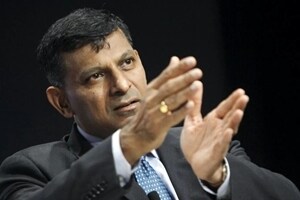Raghuram Rajan has been in news not just for his forthright opinion on the Indian economy, but also for speculation on whether he will bag another term as RBI governor. Rajan, who has been under pressure to cut repo rate to step up growth, is likely to hold status quo on Tuesday, with factors such as inflationary pressures, monsoon and US Federal Reserve rate hike weighing on his mind.
Not only that, some reports suggest that Tuesday’s policy may be last policy with Rajan’s stamp on it. Some experts expect the new monetary policy committee framework to be in place as soon as August, which would imply that the credit policy course will be decided by six-member committee.
As Rajan nears the end of his first term at RBI, what are the key things that he should focus on? What would be his unfinished agenda?
“Banks are bleeding and it’s a bubble out there that needs to be addressed by the RBI on priority,” says Arun Singh, Senior Economist at Dun & Bradstreet India. “Banking NPAs should be the biggest worry of the RBI governor, and in that sense should feature on his unfinished agenda.” “A regulatory framework needs to be evolved so that this situation does not arise again. The banking sector is bleeding and its health will be key to India’s economic recovery,” he tells FE Online.
Also read: LIVE RBI monetary policy review: Rajan keeps repo rate unchanged
Agrees Radhika Rao, Economist with DBS Bank, “He (Rajan) would be keen to address the ongoing rise in non-performing loans that plague the banking sector, ensure timely recognition of the true extent of stressed assets and also tighten the regulatory framework to prevent a re-run.”
Rao also says, “Secondly, work in cohesion with the government to ensure a smooth transition to the new monetary policy committee that is due to take into effects later this year.”
Also read: RBI monetary policy: Rajan’s headache – your EMIs are not coming down
Banking NPAs also feature on the list that DK Srivastava, Chief Policy Advisor at Ernst Young India has in mind for Rajan. “In my opinion RBI has been late in acting on the banking sector stress. It is the job of the regulator to address the concerns of the banking sector, and in that sense the RBI’s response has been somewhat delayed. Going forward this should feature in his list of priorities, also to ensure that the crisis does not reoccur.”
Srivastava adds liquidity on the list as well. “While some measures have been taken to ensure that there is decent liquidity in the economy, the situtaion is still tight. At the existing interest rate, the central bank needs to make sure that the flow of money is right,” he tells FE Online.
Incidentally, banking NPAs have been a major worry for Finance Minister Arun Jaitley as well, who met PSU bank chiefs on Monday to review the situation. Jaitley sought to assure, “The cumulative losses of Rs 18,000 crore suffered by state-owned banks last fiscal were mainly on account of higher provisioning for bad loans.”
Public sector banks (PSBs) actually made operating profits of Rs 1.40 lakh crore in 2015-16, he said, indicating that their performance was not as bad as being projected.
DON’T MISS THIS! RBI credit policy June 2016: Full coverage
